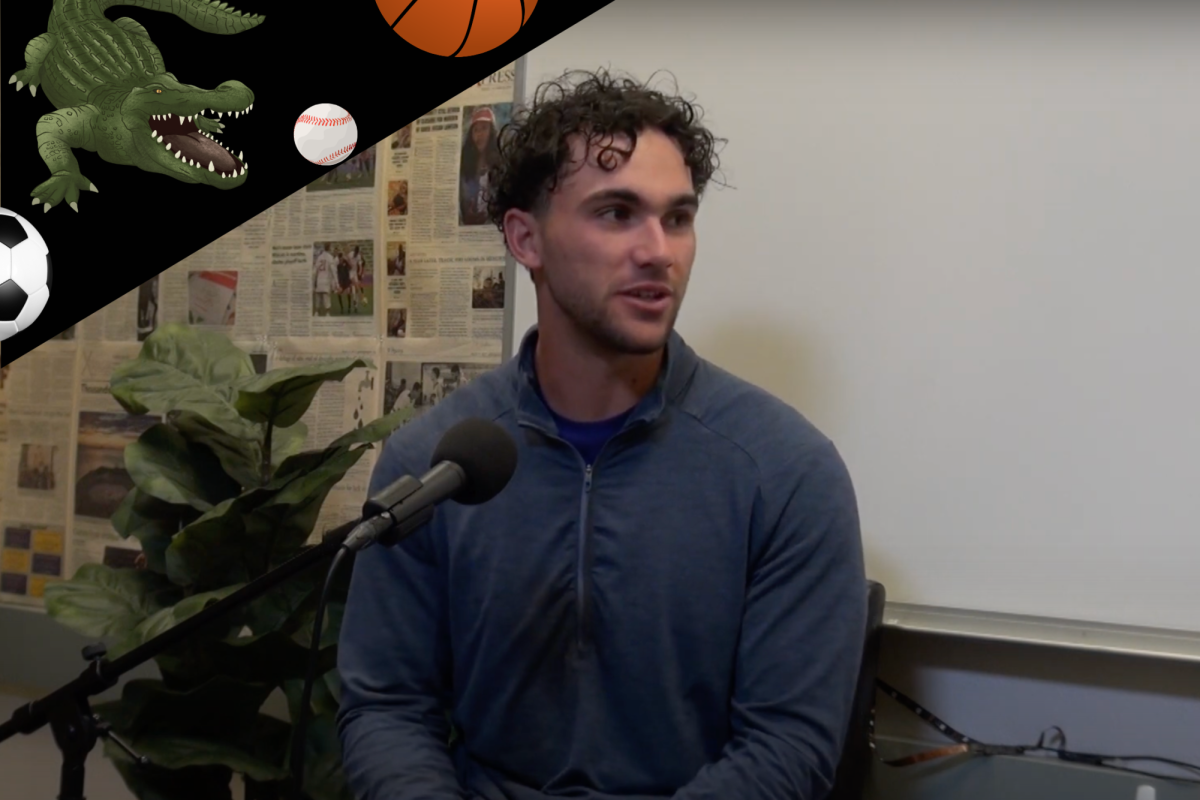With the 2014 midterm elections around the corner, voters will soon pile into poll booths next Tuesday, casting their ballots to determine the fates of local and statewide elected positions and proposed measures.
Among the high-profile selections, San Francisco residents will decide on two different transportation propositions, a sugary-beverage tax and a minimum wage proposition. Statewide, the gubernatorial assembly will pit incumbent Gov. Jerry Brown against Neel Kashkari, former banker and assistant secretary of the treasury for financial stability.
Below, Xpress has selected the most influential — and controversial — legislative issues of this year’s race.
STATE PROPOSITIONS
Proposition 1
If approved, California Proposition 1, also called the “Water Bond”, will allocate $7.12 billion in general obligation bonds for water supply infrastructure advancements in California.
The proposition would require non-state sources to provide funds for certain projects and would reallocate $425 million in bonds from prior water bond acts. The projects would target water storage and supply management, ecosystem and watershed protection, drinking water protection, water treatment improvements, water recycling and flood control.
The legislative analyst estimates the state bond repayment would increase to $360 million per year for the next 40 years, paid for by general tax revenues. Local governments are predicted to save an average of $200,000,000 per year over the next few decades.
Official supporters of the bill include Governor Jerry Brown, Senator Barbara Boxer and Senator Dianne Feinstein. The California Democratic Party and the California Republican Party both approve of the proposition. The Yes On 1 & 2 campaign is the proposition’s leading advocate and argues that voting yes will ensure a reliable water supply during drought for California. Advocates also argue that it will increase the state’s water storage, encourage economic growth, protect the environment and do so without raising taxes.
VOTE NO on Proposition 1 spearheads the campaign against the measure and argue the proposition will cost the taxpayers $15 billion–money the group believes would be better spent on education and healthcare. The opposition also argues that the water taken from California’s natural supplies will create more environmental problems and that the proposition will only benefit wealthy agriculture corporations.
Proposition 45
The Public Notice Required for Insurance Company Rates Initiative, or California Proposition 45, mandates that the insurance commissioner approve changes in rates for individual and small group health insurance companies.
If approved, the initiative will sanction health insurance companies similar to car and homeowners insurance companies. Proposition 45 will ensure that any changes made to health insurance rates are first approved by the California Insurance Commissioner and such changes will be disclosed to the public. Certain insurance companies will not be allowed to determine eligibility by credit history or lack of prior coverage.
The administrative costs for insurance regulation would be paid by health insurance companies and likely would not exceed the low millions most years, the San Francisco voter information pamphlet stated.
Supporters of Proposition 45 include the California Democratic Party, Senator Dianne Feinstein, Senator Barbara Boxer and Insurance Commissioner Dave Jones. The Yes On 45 campaign argues voters should vote for the proposition because it will allow the insurance commissioner to halt excessive rate increases, require insurance companies to justify rate increases to the public, and ensure fair pricing for insurance consumers.
The California Republican Party and Californians Against Higher Health Care Costs oppose the proposition. The NO on 45 campaign argues votes should reject the proposition because it gives politicians too much power, it creates more expensive bureaucracy, it interferes with treatment options and is sponsored by special interests who would make millions if it passes.
Proposition 46
Proposition 46, or the Medical Malpractice Lawsuits Cap and Drug Testing of Doctors Initiative, would be the first law in the US to necessitate random drug testing of medical practitioners.
If passed, the proposition will require drug and alcohol testing of doctors and positive results of such tests will have to be reported to the California Medical Board. Doctors would also have to report other doctors of suspected intoxication. The proposition would also require doctors to consult a state prescription drug history database prior to prescribing certain drugs.
Additionally, Proposition 46 would raise the $250,000 cap on medical negligence lawsuits to over $1 million. The original cap was set in 1975 and the increase is adjusted for inflation.
According to the legislative analyst, state and local health care costs are estimated to range from the tens of millions to several hundred million dollars per year if the proposition passes. State and local governments could potentially save money from new requirements on health care providers.
The Yes On 46 group is the leading supporter and argues voters should vote yes on the proposition because many doctors abuse drugs and alcohol without ever getting reported, prescription drug abuse needs to be monitored and victims of malpractice do not receive fair compensation.
The California Republican Party opposes the proposition. No On 46 is the leading adversary of the initiative and argues voters should vote no because it is costly for consumers, it skews individuals’ access to their doctors and it is a threat to personal privacy.
Proposition 47
Proposition 47 will bump some non-violent crimes down from felonies to misdemeanors classifications. The offenses that would be impacted include shoplifting, grand theft, fraud, forgery, writing bad checks and receiving stolen property– all up to a certain monetary amount.
It would also reduce the sentence for personal use of most drugs, including cocaine and heroin. If passed, the initiative would allow resentencing for those convicted under these offenses. The initiative would also create a Safe Neighborhood and Schools Fund for prevention and rehabilitation.
Joseph Miles, office coordinator for Project Rebound, is in support of the law, because it will free some inmates he sees as ready for release, such as older inmates at the end of long drug charges. However, Miles said the law does not go far enough to solve the systemic problems in California’s correctional system.
“The only thing the proposition will do is release some of those individuals serving time for marginal felony or wobbler crimes,” Miles said. Depending on the individual crime, wobbler crimes can be charged as felonies or misdemeanors.
The California Legislative Analyst estimates that about 40,000 criminals will be affected every year by the raised monetary limits to misdemeanors.
The proposition does not do enough to tackle prison overcrowding, which is often alleviated by placing more inmates in county jails instead of state prisons, Miles said.
Californians Against 47 leads the opposition, citing concerns over victim’s rights, excessive standards for new sentences, and the early release of dangerous felons.
STATE ELECTIONS
California State Assembly
San Francisco Supervisors David Campos and David Chiu are vying for the California State Assembly District 17 seat, which represents the eastern San Francisco peninsula.
Tom Ammiano, a Democrat heavily involved in San Francisco politics since the 1970s, reached his term limit this year and left the position open to one of the two San Francisco supervisors leading the race.
According to Campos, who passed legislation that provides free Muni passes to low and middle-income minors, affordability in San Francisco will be one of his priorities if he gets to Sacramento.
During his tenure with the Board of Supervisors and as president since 2009, Chiu sponsored policies that afforded new protections to renters in San Francisco such as a tax rebate program that provides financial assistance for low-income tenants in the city.
Both candidates have made affordability the foundation of their platform, but they differ greatly in campaign finance sources. Campos said individual supporters contributed greatly to his campaign, but the majority of the financing is from large donors like teachers and workers unions.
San Francisco Mayor Ed Lee endorsed Chiu’s candidacy at a campaign meeting last week.
Governor
Republican candidate Neel Kashkari is challenging Gov. Jerry Brown, Democrat, in California’s 2014 gubernatorial elections.
According to election results from the June 2014 primaries, Brown held more than 50 percent of the vote, while Kashkari obtained 19 percent. Collectively, Republican candidates captured roughly 40 percent of voter support.
Kashkari has spent almost 90 percent of the $7 million he’s received in 2014 contributions campaigning across the state.
During the single gubernatorial debate of this election season Sept. 4, which was held in the state capitol, Kashkari said reforming the public education system and creating jobs for Californians were his top priorities.
“Let’s have smart, sensible regulations where businesses can invest,” Kashkari said. “We can improve the business climate, bring jobs back here and rebuild the middle class.”
Incumbent Brown is sticking to the agenda of his current term and hasn’t established a clear platform, but his campaign has received roughly $7.8 million in contributions just this year. With more than $20 million left to use before the election next week.
Click here to view the local propositions.
Reported by: Jennah Feeley, Dayvon Dunaway, Daniel Rivera, Timothy Smith and Will Caruthers.
Edited by: Nashelly Chavez and Ida Mojadad.








Paul J. Molinaro, M.D., J.D. • Oct 31, 2014 at 2:42 pm
With regard to the “cap,” please take note that… even if one believes that the cap is an effective means to keep scumbag lawyers on a leash while still fully compensating victims of hack doctors, the amount which our legislature thought to be the perfect amount was $250,000… in 1975… it is now 2014… inflation has reached us in every area… there should be no reasonable argument against the notion that a dollar is 1975 bought more than it does in 2014. An adjustment for inflation to 2014 values should be acceptable… even for those promoting the cap.
Another point to make is that MICRA is absolutely discriminatory in its effect… the limit on pain and suffering of $250,000 is very often the limit of the entire case when it comes to the elderly and more often than it should be when it comes to women and minorities… Punitive damages? There are no punitive damages in medical malpractice cases… Lost wages? People over 65 are retired and women and minorities earn less than white males. Medical Costs? People over 65 have MediCare so there is none, and people on MediCal have none either. People, think before you vote. This law hurts the elderly and women and minorities and the poor… the very people who seem to NOT get the best medical care in the first place.
As a medical malpractice attorney AND physician, I found it difficult to read most of the Internet posts on this topic due to the misinformation, the hatred toward lawyers, the dramatic boo hoo me posts from physicians, and such. It’s really a very simple issue when boiled down. There are of course many great opinions posted, too bad they are often obscured by many over the top replies.
When I look into talking on a medical malpractice case, I know that physicians are not held to a standard of perfection or even to the standard of being the best or even almost the best in their field… They are held to the standard of care for their community and peers. The California legislature has made the legal procedures and rules for medical malpractice cases different from other areas, and done so with a purpose – that purpose being protection of doctors… and while there are many who see protecting doctors as a bad thing, it is not in and of itself really so… some doctors should be protected while others should not get the extra-legal shield afforded by the law. Physicians provide an extremely valuable services to the public and one that requires an enormous amount of skill and brain power to provide correctly – all in a field which is not black and white science but science and art combined – lives are at stake, opinions vary, advancements in science abound, no two patients are alike, etc. In addition, medical malpractice cases are extremely expensive and difficult to bring (properly, that is… anyone can slam together an unintelligible complaint and pay the filing fee). To make a suit “worth it,” there needs to be significant damages – and damages that would not have occurred otherwise. As a generalized example, a one month delay in treatment, that is just as effective one month later as it would have been earlier is not going to provide significant damages.
The current law makes bringing frivolous or even low dollar suits economically destructive for an attorney… as it stands now, those of us who know what we are doing will only take the high dollar cases… the hard costs of suit are enormous (as medical experts now regularly charge upwards of $800 an hour for testimony).
As for people who figure this is someone else’s problem… I hate to remind people that the victims of medical malpractice never thought they would be victims before they were… they were plain old people who trusted doctors and such prior to their “incident” (as defense counsel like to callously call it). Their lives are ruined and they deserve fair compensation… since medical injury cannot be undone, all the courts can offer is money.
– Paul
Paul J. Molinaro, M.D., J.D.
Attorney at Law, Physician
http://www.888MDJDLAW.com